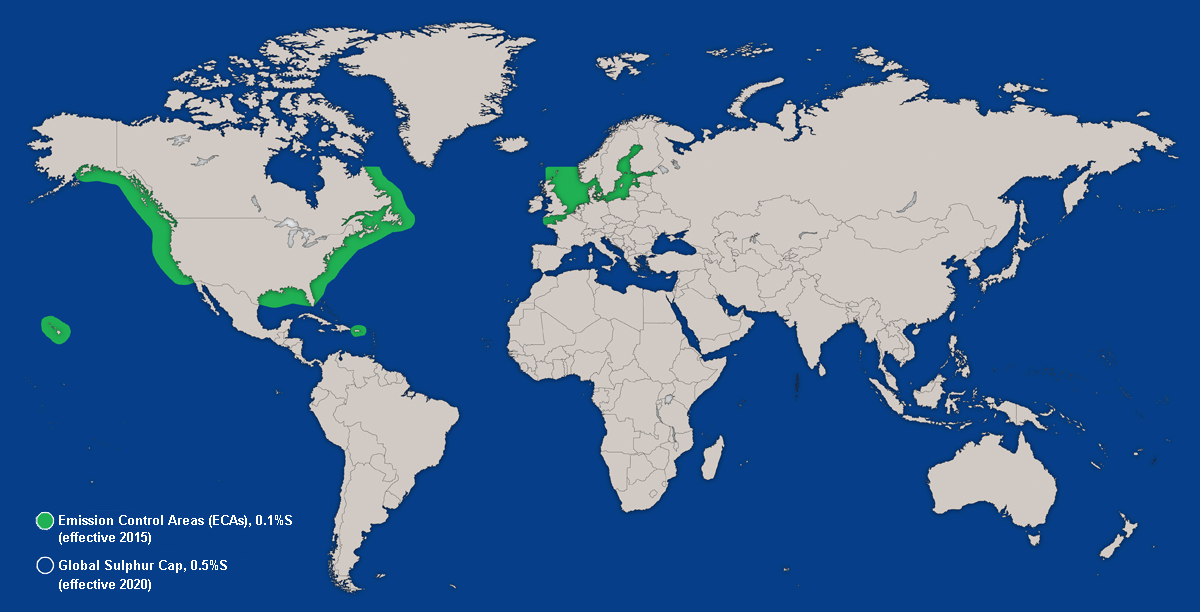11/25/2019
IMO2020 - New fuel charges

The revised Annex VI of the MARPOL convention reduces the allowed sulphur (SOx) content of marine fuels from 3,5% to 0,5% as from January 1st 2020
What are SOx?
SOx is the abbreviation of sulphur oxides. The most common sulphur oxide is is sulphur dioxide (SO2). The main emission source of sulphur dioxide is the burning of fossil fuels.
Sulphur dioxide gas dissolves in the water droplets in clouds causing the rain to be more acidic than usual. Acid rain affects the natural balance of rivers, lakes and soils, resulting in damage to wildlife and vegetation.
Restrictions in SOx and compliance options
From January 2020 there will be a global cap of 0.5%SOx, while a 0.1%SOx limit already exists in today’s Emission Control Areas. Today’s bunker fuels (HFO – heavy fuel oil, MGO – marine gas oil, and others) have a sulphur content well above these limits.

That leaves shipowners with three compliance options:
- Install a SOx scrubber
The scrubber technology works by passing the dirty exhaust gas stream created by the engines through chambers that contain a “srubbing cloud” of water.
This option allows continued use of economical HFO. However, the payback time depends on the difference between HFO price and low-suphur fuel price.
- Use low-sulphur fuel
Switching to low-suphur fuel has a low investment cost. There is some uncertainty regarding low-sulphur fuel price and availability, therefore it is expected that this option leads to higher long-term costs than using HFO with a scrubber.
- Switch to LNG (Liquified Natural Gas)
LNG-propelled ships emit less 90% SOx than conventional fuel oils, being always in SOx compliance. The cons are the investment cost, limited infrastructure and the uncertain fuel price.
The new fuel surcharges
All the compliance options mentioned above bring on additional costs for shipping lines and customers. Some shipping lines estimate these costs will exceed 2 billion USD per year.
Some of these costs will be passed on to the customers, namely by implementing new or adjusting existing fuel related surcharges. These charges will be effective as from December 1st 2019, to cover the initial investments, like installing scrubbers or preparing fuel tanks. Each shipping line calculates these surcharges in different ways, as the costs incurred depend on several factors, such as trade lanes and fuel consumption.
In Euroatla we are prepared to inform the fuel related charges for any seafreight route, as well as the impact these charges have in your total transport cost. For further information, go to the IMO website or talk to us.


